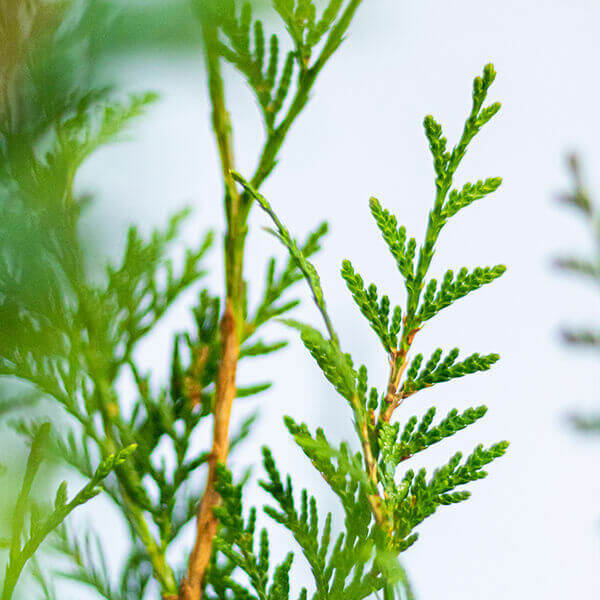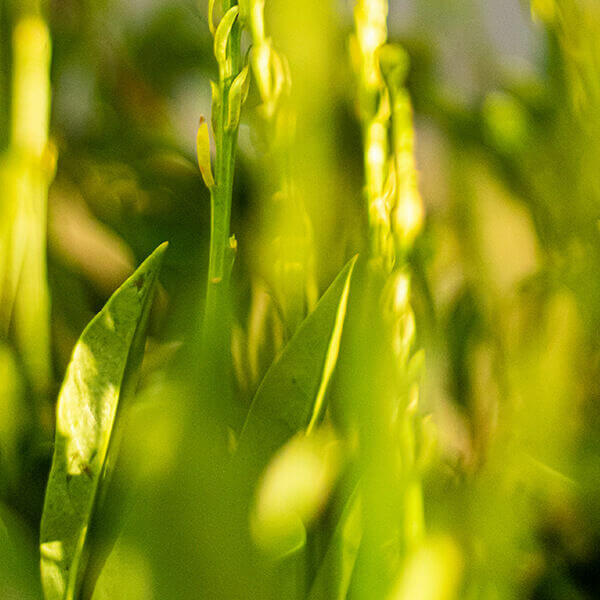Best Hedging Plants For Creating Enclosures
Best Hedging Plants For Creating Enclosures
Blog Article
Best Hedging Plants For Spring Interest
Enhance your garden's attraction with lush hedge varieties such as Yew (Taxus), Thuja, Laurel, Photinia, and Bamboo, celebrated for their structural stability and environmental advantages.
Yew and Thuja provide evergreen coverage and winter season durability, while Laurel uses quick development and broad, fragrant leaves.
Photinia includes seasonal charm with its dynamic red foliage, and Bamboo provides a low-maintenance, serene ambiance.
These hedges enhance air quality, lower sound, and create tranquil, private spaces.
Appropriate planting, spacing, and maintenance ensure vigorous growth and environmental harmony.
Explore how these lavish varieties can raise your garden's beauty and well-being.
Secret Takeaways
Transform Your Garden With Lush Hedge Ranges
- Select Yew for its thick, evergreen development and unrivaled durability.
- Opt for Laurel for its quick development and broad leaves, making sure quick privacy.
- Select Photinia for its dynamic seasonal foliage, which turns a striking dark red.
- Make use of Bamboo for a low-maintenance, winter-hardy hedge with visual appeal.
- Area plants 2-3 per meter and prune regularly for optimal growth and health.
Popular Hedge Plants
When transforming a garden with lush hedge varieties, it's vital to think about popular hedge plants such as Yew, Thuja, Laurel, and Photinia due to their distinct qualities and advantages.
Yew (Taxus) is extremely respected for its longevity and dense, green growth, making it a prime choice for enduring landscapes.
Thuja is kept in mind for its evergreen foliage and robust winter season strength.
Photinia includes seasonal vibrancy with red leaves that darken with time, developing vibrant visual appeal.
Laurel provides fast growth and fragrant, broad leaves, ideal for fast personal privacy.
In Addition, Bamboo is an exceptional option for ambiance, offering a low-maintenance, winter-hardy option that boosts the garden's visual with its stylish, swaying canes.
These choices accommodate a variety of horticultural needs and choices.
Advantages of Garden Hedges
Garden hedges provide a wide range of benefits, making them an important addition to any landscape. These natural barriers are economical to implement and provide substantial wind security, enhancing air blood circulation and contributing to noise decrease. The dense foliage of hedges like Thuja and Beech makes sure personal privacy by obstructing presence, producing a serene and remote environment.
Hedges also play a crucial function in microclimate regulation, offering a stable environment that cultivates plant growth and decreases temperature variations. Their elaborate leaf structures filter toxins, improving air quality and adding to a healthier garden environment.
Moreover, hedges stand out in noise reduction, soaking up and deflecting sound waves to lower ambient sound levels. This double functionality of supplying both acoustic and visual personal privacy enhances the total tranquility and visual appeal of any garden.
Planting and Maintenance Tips
For an effective hedge, precise preparation of the planting location is essential. Guarantee the soil has correct pH and drainage to support strong root advancement.
Area the plants appropriately for the selected types. Water the hedge regularly during its initial development stage, adjusting as needed with seasonal changes.
Carry out a systematic insect control and illness prevention technique, utilizing natural or chemical treatments when necessary. Routinely examine for aphids, termites, and fungal infections.
Apply mulch to maintain wetness and suppress weeds. Seasonal pruning promotes dense growth and air flow, vital for plant health.
Following these standards will assist you cultivate a lively, well-maintained hedge that enhances the beauty of your garden.
Spacing and Trimming Guidelines
Spacing and Trimming Guidelines
Appropriate spacing and trimming are essential for cultivating healthy, visually appealing hedges. Sufficient spacing guarantees each plant gets adequate nutrients, light, and airflow.
Follow these guidelines for ideal hedge maintenance:
- Spacing: Position hedge plants 2-3 plants per meter to encourage robust growth.
- Pruning Techniques: Regular pruning is essential for keeping wanted hedge height and shape. Cut brand-new development in summertime and cut back older wood during winter season.
- Seasonal Care: Change cutting schedules and approaches according to seasonal requirements to guarantee plant health.
- Hedge Height: Routinely screen and trim to keep the wanted hedge height and accomplish uniform visual appeals.
Abiding by these steps will ensure your hedge grows, boosting both the appeal and functionality of your garden.
Choosing the Right Hedge
Picking the Right Hedge
Choosing the appropriate hedge involves assessing factors such as mature height, foliage density, and ecological durability. Successful click here hedge plant choice requires understanding each types' growth attributes and site-specific versatility.
For instance, Yew (Taxus) provides excellent durability and dense development, while Thuja is noteworthy for its winter durability. Additionally, thinking about maintenance requirements is vital; fast-growing species like Laurel or Privet need regular cutting, whereas low-maintenance options like Bamboo or Ivy may be preferable for those looking for minimal maintenance.
Ecological aspects such as soil type, light accessibility, and moisture conditions must likewise direct the choice process. This cautious technique ensures the picked hedges will thrive, offering both visual and functional benefits to the garden landscape.
Delivery and Planting Suggestions
To ensure your hedge plants prosper, they need to be delivered by specialized couriers and planted immediately upon arrival.
Follow these necessary steps for successful planting:
- Soil Preparation: Enhance the soil with raw material to improve drainage and nutrient material.
- Planting Depth: Develop a trench two times the width and equal to the depth of the root ball.
- Watering Methods: Water completely after planting, keeping the soil regularly wet however not saturated.
- Mulching: Apply a layer of mulch to keep moisture and reduce weeds.
Consumer Assistance and Service
Offered the crucial role of timely assistance in horticultural pursuits, our client support group is offered 6 days a week through telephone, e-mail, and social networks to offer expert recommendations and promptly resolve any issues. Their devotion to fast action times makes sure consumer satisfaction by resolving queries related to plant health, optimal planting methods, and maintenance schedules.

Communication Approach
----------------------
This comprehensive support group, strengthened by an outstanding 9.3/ 10 consumer ranking, highlights our dedication to enhancing the gardening experience for every client.
Frequently Asked Questions
How Long Does It Take for Hedge Plants to Establish?
Hedge plants typically require one to three years to become fully established, with the exact duration varying by species and growing conditions.
Effective care throughout this important duration is necessary for robust development. Constant watering, watchful weed control, and suitable fertilizer application are critical in promoting strong root development.
For example, fast-growing types like Laurel might develop faster, while slower-growing varieties such as Yew might take longer. Thorough upkeep speeds up the establishment process, leading to healthy and thick hedges.
What Are the Best Hedge Plants for Privacy?
The concern of the finest hedge plants for privacy involves evaluating evergreen and deciduous alternatives.
Evergreen hedges like Thuja, Laurel, and Cypress offer year-round coverage, ensuring constant privacy.
In contrast, deciduous hedges such as Beech use seasonal personal privacy, shedding leaves in chillier months.
Key upkeep ideas for privacy hedges consist of routine trimming, fertilizing in spring, and correct spacing-- usually 2 to 3 plants per meter.
Additionally, constant watering and persistent weed removal are important for promoting healthy, dense development.
Can Hedge Plants Draw In Wildlife to My Garden?
Yes, hedge plants can attract wildlife to your garden by offering essential advantages like shelter, food, and nesting sites, therefore improving local biodiversity. Yew, holly, and laurel are excellent for drawing in birds, while ivy supports a variety of insects.
However, it is necessary to note that there are some disadvantages, such as increased maintenance to manage bugs and regular maintenance. Thoroughly selecting and keeping hedge varieties can help stabilize these downsides and benefits, ultimately cultivating a vibrant and sustainable environment in your garden.
Are There Any Flowering Hedge Plants Available?
Yes, there are flowering hedge plants readily available that can enhance the beauty of your garden.
For instance, Elaeagnus, likewise known as Olive Willow, produces fragrant white flowers in the fall, including a touch of sophistication.
Photinia, another popular option, showcases vibrant red leaves that develop into an abundant green, developing a vibrant visual effect throughout the seasons.
To ensure these plants flourish, it's necessary to practice correct pruning techniques and seasonal maintenance, such as trimming new development in the summer season and cutting down in the winter season.
These procedures will assist maintain the health and aesthetic appeal of your flowering hedges.
How Do I Prevent Pests in My Hedge Plants?
To prevent insects in hedge plants, utilize natural insect control techniques and preserve appropriate hedge care. Present useful bugs like ladybugs, which take advantage of damaging insects, to produce a well balanced community.
Routinely examine your hedges for signs of invasion and quickly remove any affected parts to prevent the spread. Ensure the health of your hedges by applying well balanced fertilizers and supplying appropriate water.
Make use of mulching to retain soil moisture and correct spacing to reduce plant tension and promote robust development. These practices jointly help in reducing pest issues and keeping a healthy hedge.
Conclusion
In essence, picking the best hedge varieties such as Yew, Thuja, and Laurel can transform any garden into a serene sanctuary. These plants offer year-round greenery, boost visual appeal, and offer useful advantages like noise reduction and wind defense.
Appropriate planting techniques, precise spacing, consistent watering, and seasonal trimming are essential for ideal growth.
Reliable shipment services and professional customer assistance ensure a smooth experience from purchase to planting, making it simpler than ever to raise your outside space.
Garden hedges provide a wide range of advantages, making them a valuable addition to any landscape. These natural barriers are cost-effective to execute and provide substantial wind protection, boosting air flow and contributing to sound reduction. The thick foliage of hedges like Thuja and Beech ensures personal privacy by obstructing exposure, creating a secluded and tranquil environment.

Pruning Strategies: Routine pruning is important for preserving wanted hedge height and shape. Cut brand-new development in summer and cut back older wood during winter.
Report this page